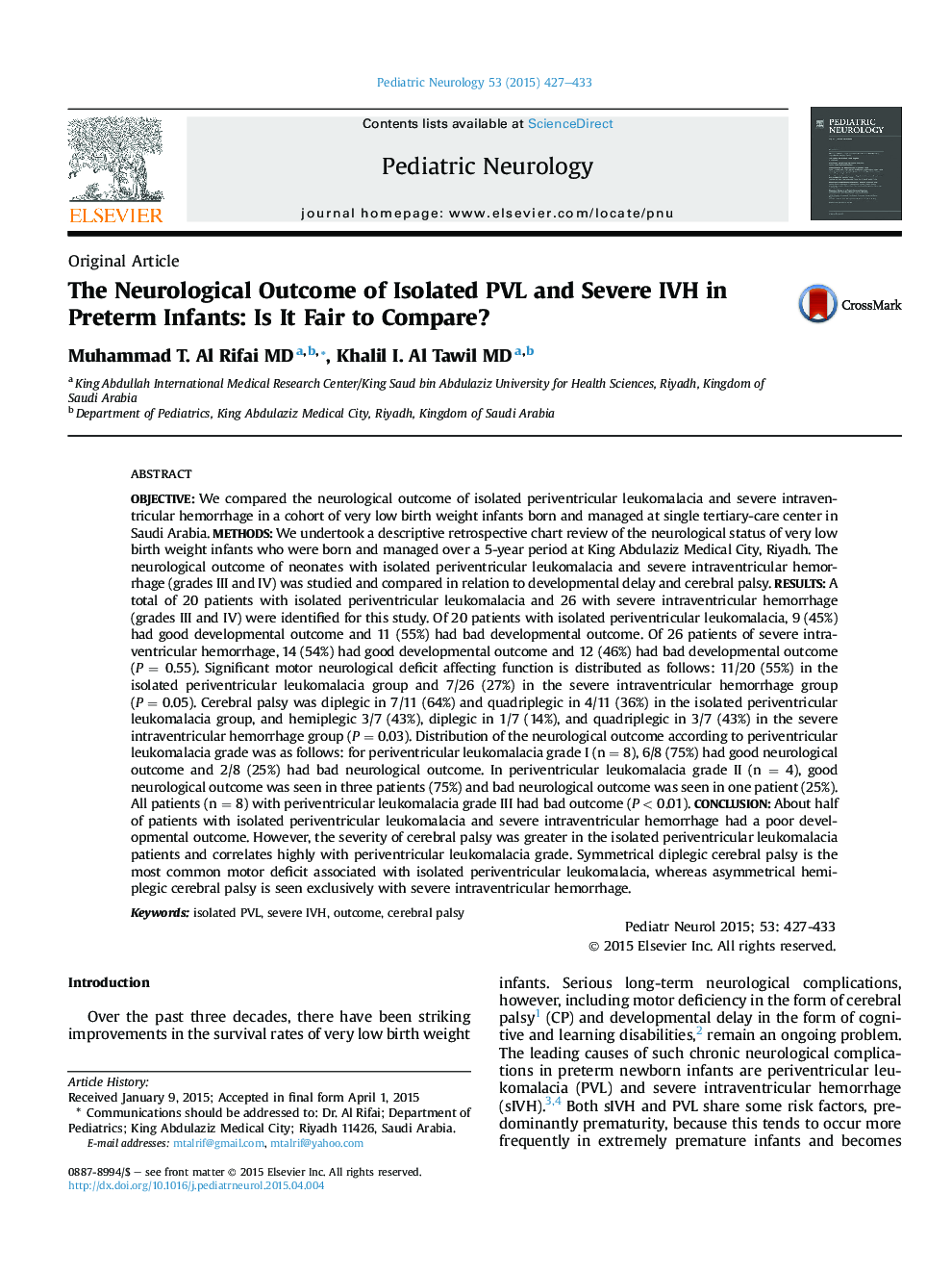| کد مقاله | کد نشریه | سال انتشار | مقاله انگلیسی | نسخه تمام متن |
|---|---|---|---|---|
| 3084411 | 1189766 | 2015 | 7 صفحه PDF | دانلود رایگان |

ObjectiveWe compared the neurological outcome of isolated periventricular leukomalacia and severe intraventricular hemorrhage in a cohort of very low birth weight infants born and managed at single tertiary-care center in Saudi Arabia.MethodsWe undertook a descriptive retrospective chart review of the neurological status of very low birth weight infants who were born and managed over a 5-year period at King Abdulaziz Medical City, Riyadh. The neurological outcome of neonates with isolated periventricular leukomalacia and severe intraventricular hemorrhage (grades III and IV) was studied and compared in relation to developmental delay and cerebral palsy.ResultsA total of 20 patients with isolated periventricular leukomalacia and 26 with severe intraventricular hemorrhage (grades III and IV) were identified for this study. Of 20 patients with isolated periventricular leukomalacia, 9 (45%) had good developmental outcome and 11 (55%) had bad developmental outcome. Of 26 patients of severe intraventricular hemorrhage, 14 (54%) had good developmental outcome and 12 (46%) had bad developmental outcome (P = 0.55). Significant motor neurological deficit affecting function is distributed as follows: 11/20 (55%) in the isolated periventricular leukomalacia group and 7/26 (27%) in the severe intraventricular hemorrhage group (P = 0.05). Cerebral palsy was diplegic in 7/11 (64%) and quadriplegic in 4/11 (36%) in the isolated periventricular leukomalacia group, and hemiplegic 3/7 (43%), diplegic in 1/7 (14%), and quadriplegic in 3/7 (43%) in the severe intraventricular hemorrhage group (P = 0.03). Distribution of the neurological outcome according to periventricular leukomalacia grade was as follows: for periventricular leukomalacia grade I (n = 8), 6/8 (75%) had good neurological outcome and 2/8 (25%) had bad neurological outcome. In periventricular leukomalacia grade II (n = 4), good neurological outcome was seen in three patients (75%) and bad neurological outcome was seen in one patient (25%). All patients (n = 8) with periventricular leukomalacia grade III had bad outcome (P < 0.01).ConclusionAbout half of patients with isolated periventricular leukomalacia and severe intraventricular hemorrhage had a poor developmental outcome. However, the severity of cerebral palsy was greater in the isolated periventricular leukomalacia patients and correlates highly with periventricular leukomalacia grade. Symmetrical diplegic cerebral palsy is the most common motor deficit associated with isolated periventricular leukomalacia, whereas asymmetrical hemiplegic cerebral palsy is seen exclusively with severe intraventricular hemorrhage.
Journal: Pediatric Neurology - Volume 53, Issue 5, November 2015, Pages 427–433